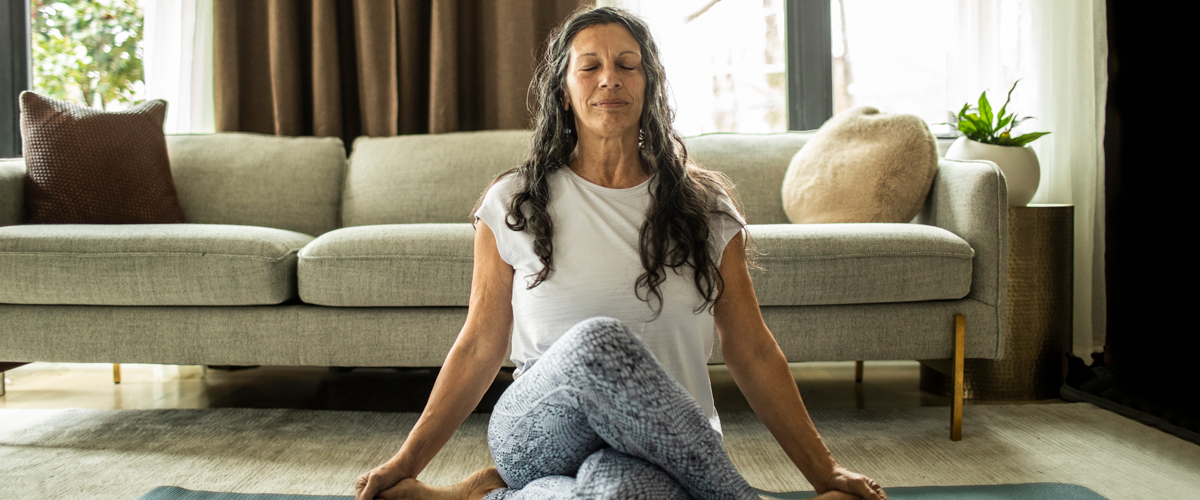Build Balance and Prevent Falls Through Somatic Exercises

May 16, 2025 | Tags:
As you age, the likelihood of falling or a fall causing significant health problems rises. The Centers for Disease Control and Prevention (CDC) reports that over 14 million adults aged 65 and older fall every year from factors like surroundings, muscle weakness, health conditions or medications.
Staying active with exercise focused on improving your balance, stability and coordination can lower your risk.
What are somatic exercises and how do they help prevent falls?
Somatic exercises, meaning “relating to the body,” involve subtle, mindful movements that focus attention on internal sensations. Unlike pushups and other traditional exercises that build strength, somatic exercises train your brain to control muscles, enhance balance and increase awareness through slow, deliberate movements.
These activities help you stay coordinated, build core strength and keep your joints mobile, so you can keep enjoying the things you love as you age. You may be aware of some popular somatic exercises, including:
- Yoga
- Pilates
- Dance
- Tai Chi
What are additional health benefits of somatic exercise?
Somatic exercises are suitable for older adults and those with mobility issues. “They don’t require special equipment and can be done in a variety of positions and settings, like the comfort of your home,” said Dr. Linda Patterson, Utilization Management Medical Director at Medical Mutual.
Somatic exercises use relaxed muscles and slow, gentle movements, making them easier on the body. For those with chronic pain and muscle tension, these exercises can address difficult movements and how to manage them. Somatic exercises can also serve as a therapeutic way to address mental health through:
- Meditation
- Breath work
- Stretching
Strengthening this mind-body connection increases awareness of thoughts and emotions, reduces stress and anxiety, improves emotional well-being and helps heal past trauma.
Talk to your provider about other ways to improve your balance
Consider supportive footwear, since over 50% of older adults who fall at home admit to wearing slippers, socks or no shoes. Other tips include installing grab bars, using non-slip mats in bathtubs and showers, and reducing home clutter.
Talk to your primary care provider (PCP) about testing for bone loss conditions like osteoporosis. Because these can cause balance issues, women should be tested every two years starting at age 65, or earlier if post-menopausal with risk factors.
Your MedMutual Advantage® plan includes SilverSneakers®, a wellness program that offers virtual and in-person stability and balance classes at thousands of fitness locations or virtually for no added cost. To find a participating fitness center near you, visit SilverSneakers.com.
If you do not have a PCP, Medical Mutual can help. Use our provider search tool at MedMutual.com/FindAProvider or call the Customer Care phone number listed on your member ID card.
SilverSneakers is a registered trademark of Tivity Health, Inc.


